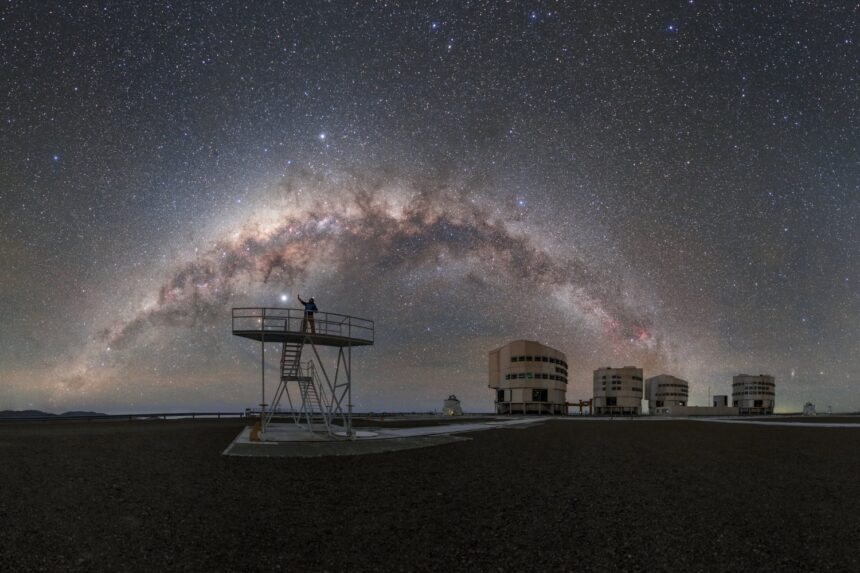Astronomers may have just stumbled across a ghost galaxy hiding in plain sight — a small, starless, fast-moving cloud of gas that checks all the boxes for what’s known as a “dark galaxy.” And if the discovery holds up, it could help plug one of cosmology’s most puzzling holes: the mysterious “missing satellite” problem.
The team’s research, published today in Science Advances, describes AC G185.0–11.5, a compact hydrogen cloud tucked inside a larger high-velocity cloud (HVC) known as AC-I. The cloud was spotted by an international research team using China’s huge FAST radio telescope. While HVCs are known to zoom around at speeds beyond that of our Milky Way’s rotation, most are relatively featureless gas blobs. But the recently spotted gas cloud is different: it spins.
FAST’s ultra-sensitive observations revealed a clear rotational pattern in the cloud, whose gas is arranged in a disk shape — the kind of structure you’d expect from a dwarf galaxy. But something’s amiss: there’s no sign of stars in the cloud, and no molecular gas (the usual star-forming stuff) to be found. AC G185.0–11.5 is apparently constituted of just hydrogen gas, swirling in space, with nothing within it lighting it up. Ergo, a dark galaxy.
Using galactic motion equations and a cosmic yardstick called the Tully-Fisher relation, the team estimated the cloud’s distance from Earth: about 278,000 light-years. That puts the cloud comfortably within the Local Group, our galactic neighborhood. As for mass, the cloud sits between 30 million and nearly 500 million Solar masses—not huge, but enough to be considered a galaxy in its own right.
But what gives AC G185.0–11.5 its nifty label of “dark galaxy” is its dark matter content. The researchers believe the cloud is held together by a massive dark matter halo, making it an ideal dark galaxy candidate — a theoretical type of galaxy made mostly of dark matter, with little or no visible stars.
This isn’t the first time scientists have suspected that some high-velocity clouds might actually be hidden galaxies, but most other candidates have lacked clear rotation or have been too difficult to distinguish from the Milky Way’s halo. AC G185.0–11.5 looks like the real deal — potentially the best evidence yet for a galaxy that’s all meat and no potatoes. You know, if potatoes were stars.
If the candidate dark galaxy is confirmed as such, it could rewrite how we think about galaxy formation. The cloud offers a tantalizing hint about where all the “missing” small galaxies might be hiding — not missing, just sitting lightless in plain sight.
Read the full article here











